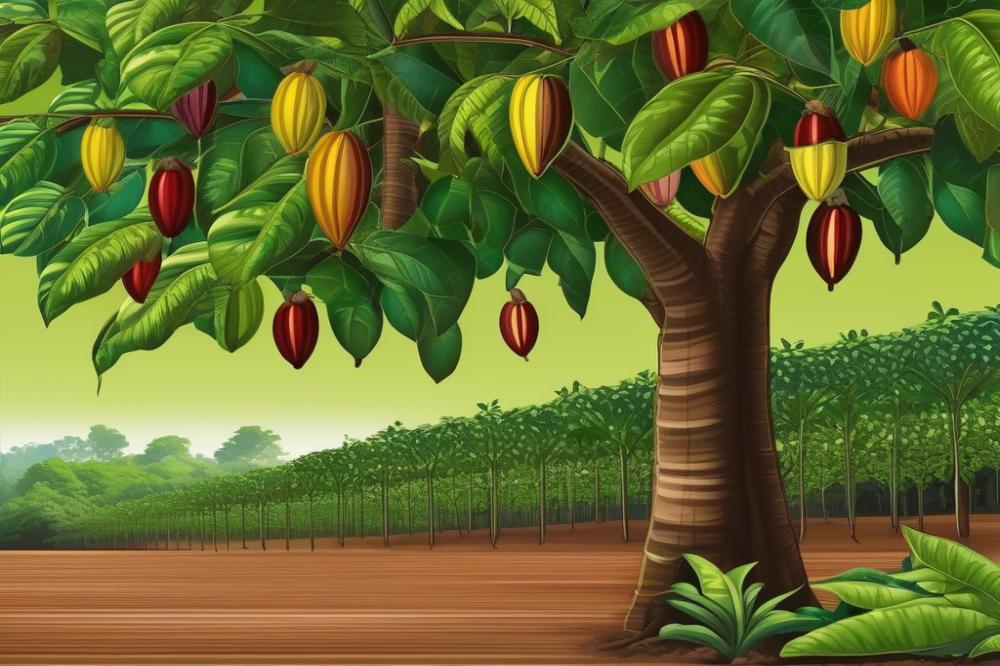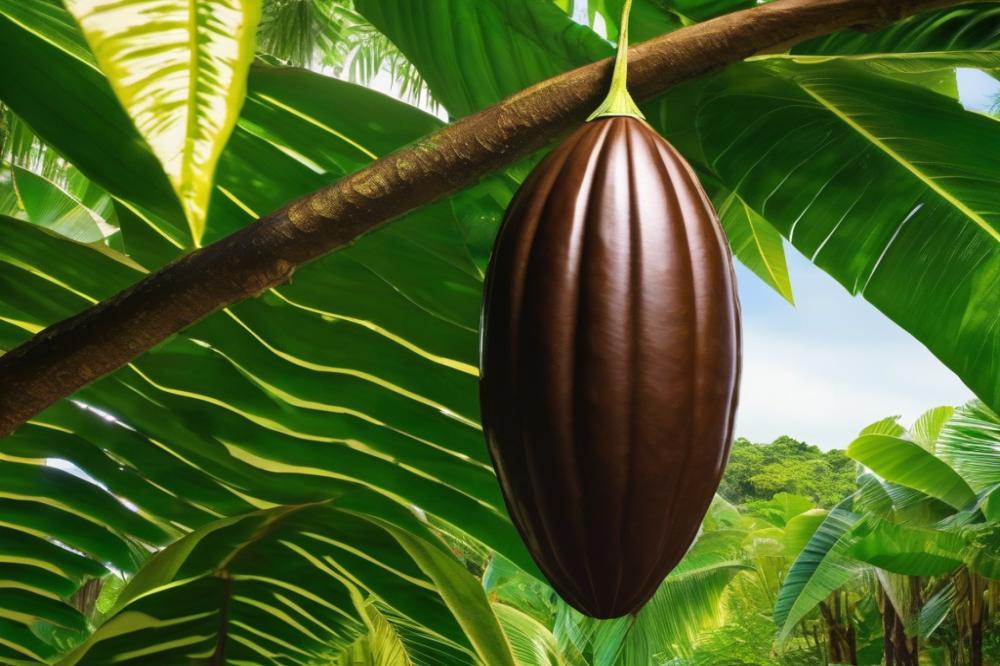Introduction
The Cocoa plant, or Theobroma cacao, is vital for chocolate production, a beloved treat worldwide. Grown mainly in tropical regions, these trees demand specific care and conditions for optimal growth. The beans they produce are not just the heart of chocolate but also a source of livelihood for millions of farmers. As the global appetite for chocolate continues to rise, understanding the factors that impact cocoa cultivation becomes essential.
Cocoa pests and diseases pose significant challenges to farmers. Recognizing these threats is crucial for sustainable farming and effective crop management. When pests invade cocoa farms, they can lead to reduced yields and even total crop loss. Therefore, knowing how to identify these pests is an important skill for any farmer.
organic solutions offer a way to combat these challenges without relying on harmful chemicals. These methods embrace biodiversity and promote a balanced ecosystem. Techniques such as natural pest control and better crop management strategies serve to protect Cocoa plants. The goal is to maintain healthy cacao trees while minimizing environmental impact.
This article focuses on both identifying Cocoa pests and exploring various organic solutions to manage them. A blend of knowledge on cacao diseases and proactive pest prevention strategies can lead to healthier crops and a greener future in chocolate production. Let’s take a closer look at what farmers need to know for successful cocoa plant care.
Cocoa Pests: Identification

Common pests affecting cocoa plants
Cocoa plants face threats from various pests. Some of the most notorious ones include the cocoa pod borer and the mirid bug. These insects can cause severe damage if not managed properly. Nematodes are also known to affect the root systems. Farmers often struggle with these issues during the growing season.
Identification characteristics of cocoa pests
Recognizing pests is essential for effective control. The cocoa pod borer can be identified by holes in the pods and frass, which is the pest’s waste. Mirid bugs appear as small, greenish or brown insects. They often feed on the leaves, leading to yellowing and wilting. Signs of nematode damage include stunted growth and root deformities. Observing these features can make pest identification easier.
The impact of cocoa pests on plant health and yield
Pests can significantly reduce the health of cocoa plants. When infestations occur, they rob plants of nutrients. This damage can lead to lower yields and less quality chocolate. Farmers may find their efforts in cocoa plant care inhibited, leading to economic losses. Affected crops can struggle to survive long-term without effective management.
Relation to cacao diseases and their symptoms
Pests often contribute to the spread of cacao diseases. These diseases can manifest as fungal issues or bacterial infections. For instance, if pests weaken a plant, diseases are more likely to set in. Symptoms may include brown spots on leaves and rot in pods. Understanding this relationship is crucial. It highlights the importance of integrated crop management and sustainable farming practices. Farmers who prioritize pest prevention will likely see healthier crops. Agroecology supports this by promoting biodiversity, which helps combat pests naturally.
Organic Solutions for Cocoa Pests

Overview of Natural Pest Control Methods
Natural pest control methods focus on preserving the health of ecosystems while managing harmful insects. These approaches commonly use biological agents instead of synthetic chemicals. Learning to recognize pests is crucial for effective action. Farmers can intervene early to disrupt pest life cycles. Techniques like companion planting and crop rotation are also helpful. Each method promotes a balanced relationship between plants and their environment.
Benefits of Organic Solutions in Sustainable Farming
Choosing organic solutions offers numerous advantages for sustainable farming. First, they improve soil health, promoting harmonious growth. Using fewer chemicals helps safeguard waterways and wildlife from harmful exposure. This approach fosters biodiversity, creating a more resilient agricultural landscape. Additionally, organic methods often enhance the quality of chocolate production. Farmers practicing these techniques can attract more consumers who value sustainable practices.
Effective Organic Methods for Managing Cocoa Pests
Various effective methods exist for managing pests affecting cocoa plants. Introducing neem oil can deter many insects while posing little risk to beneficial species. Soap sprays offer another safe alternative for reducing pest populations without harming the environment. Homemade traps can target specific pests, minimizing any collateral damage. Proper crop management and maintenance practices are vital to enhancing plant vigor. Healthy plants are less susceptible to pest infestations.
Use of Beneficial Insects and Biodiversity in Pest Management
Utilizing beneficial insects can form a key part of pest management strategies. For instance, ladybugs and lacewings naturally control aphid populations. Encouraging these insects can lead to a natural balance where pests are kept at bay. Biodiversity plays a critical role in creating a resilient agroecology system. Diverse plantings attract various beneficial organisms, enhancing pest prevention. Maintaining this complexity in farming systems contributes to long-term health for both crops and the environment.
Cocoa Plant Care and Pest Prevention

Proactive cocoa plant care plays a vital role in maintaining healthy crops. When farmers focus on their plants, they can spot issues early. Regular inspection helps with pest identification, which is key to any sustainable farming approach. This vigilance allows for quick action before pests can cause serious damage to the plants.
Pest Prevention Strategies for Cocoa Plants
Implementing reliable pest prevention strategies can save a crop. One effective method involves rotating crops. By alternating different types of plants, farmers can disrupt pest life cycles. This practice can significantly reduce the risk of infestations. Another strategy includes layering ground cover plants. These cover crops help protect the soil and can also attract beneficial insects that eat pests.
Agroecology Practices That Enhance Resilience Against Pests
Agroecology promotes healthy ecosystems. This method builds resilience against pests through biodiversity. Diverse plant life supports a range of beneficial insects. These insects can naturally control pest populations. Additionally, using organic fertilizers enhances soil health. Healthy soil leads to stronger plants that can withstand threats more effectively.
Creating a Biodiverse Environment to Deter Cocoa Pests
Establishing a biodiverse environment is crucial for pest management. Planting various species alongside cocoa can deter harmful insects. For example, flowers attract pollinators and predatory insects. These allies help control pest populations without chemicals. It’s also important to maintain habitats for birds and bats. Both these creatures feast on insects, providing another layer of natural pest control.
Crop Management Strategies
Integrating pest management into overall crop management is crucial for farmers. Effective methods not only support healthy plants but also promote robust ecosystems. This all-encompassing approach combines various techniques, including pest identification and natural pest control. Farmers can respond swiftly to any infestation, thus minimizing damage to crops.
Monitoring and Assessing Pest Populations
Regular monitoring helps identify pest populations before they escalate. Observing crops frequently allows farmers to catch early signs of trouble. Tools like traps and sticky cards can provide valuable data on pest activity. Documenting changes in population can facilitate timely interventions. This proactive approach is essential for maintaining the health of cacao plants.
Rotation and Diversity in Planting
Diverse planting strategies can significantly reduce the impact of pests. Rotating crops disrupts the life cycles of harmful insects and diseases. Farmers benefit from planting different varieties of crops close to each other. This promotes biodiversity and attracts beneficial insects that can naturally help with pest prevention. A varied planting schedule can significantly enhance sustainable farming practices.
Role of Farmer Education
Farmer education plays a key role in pest management and sustainable practices. Learning about agroecology allows growers to utilize natural resources efficiently. Workshops and training sessions can teach farmers effective cocoa plant care techniques. Gaining knowledge about pest identification empowers farmers to make informed decisions. Continued education in sustainable practices leads to innovative strategies that support chocolate production.
Wrapping Up: The Path Forward in Cocoa Farming
Identifying pests that harm cocoa plants is critical for maintaining healthy crops. Farmers need to recognize the signs of infestation early. Ignoring these issues can lead to significant losses in yield and quality. Understanding the pest lifecycle is important for effective management. This proactive approach minimizes damage and supports sustainable farming practices.
Organic solutions play a vital role in combating these challenges. Simple methods like introducing beneficial insects or using natural repellents can keep pests at bay. Crop rotation and intercropping also contribute to pest control. These practices promote biodiversity and improve soil health. Every farmer should consider these environmentally friendly options for the long term.
Looking ahead, pest management strategies in cocoa farming must evolve. Climate change and globalization are introducing new pests and diseases. Therefore, ongoing research is essential. Using technology can also assist in monitoring pest populations. Through combined efforts in organic solutions and pest identification, farmers can better adapt to these challenges. The future of cocoa plant care seems promising if sustainability remains a priority.



